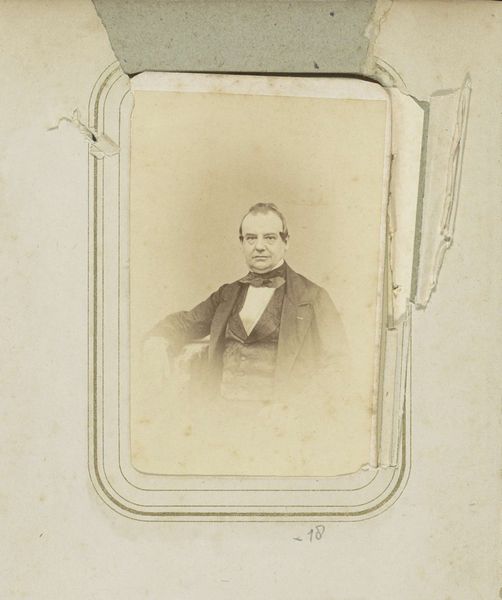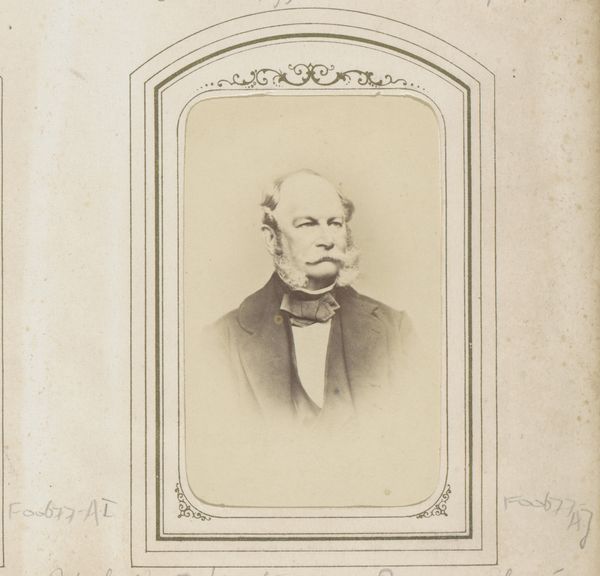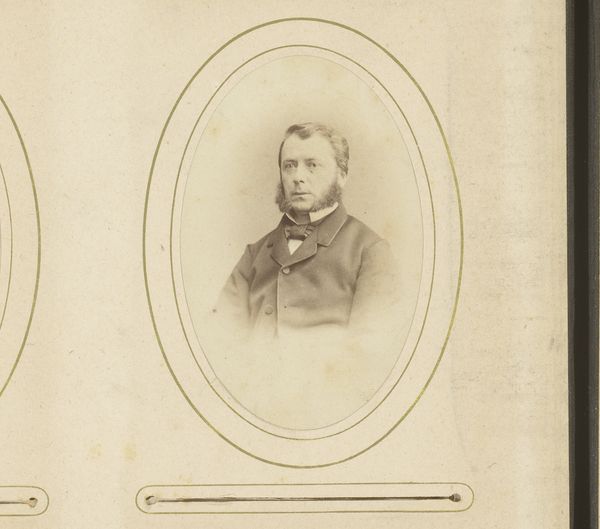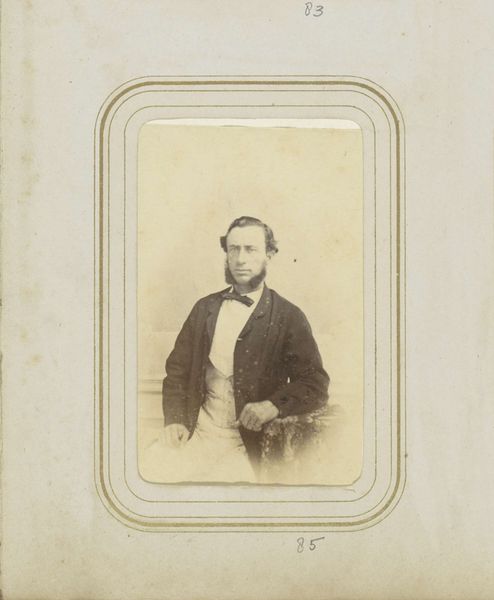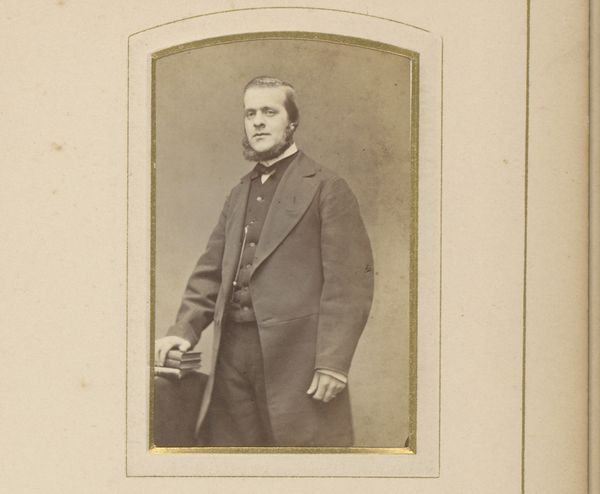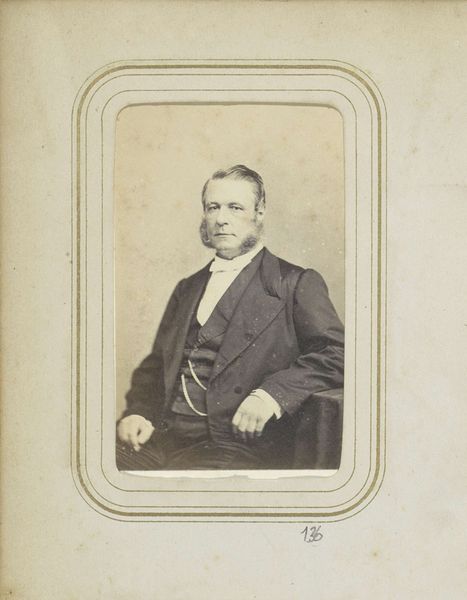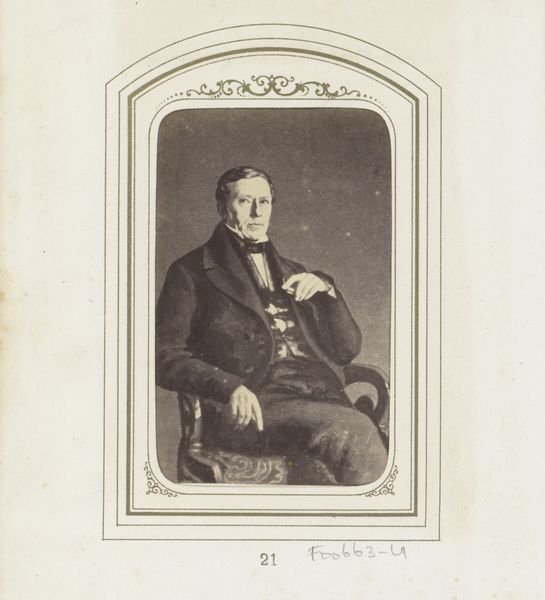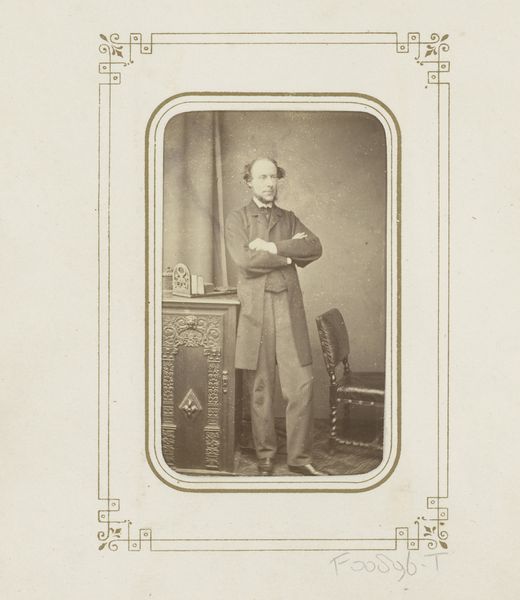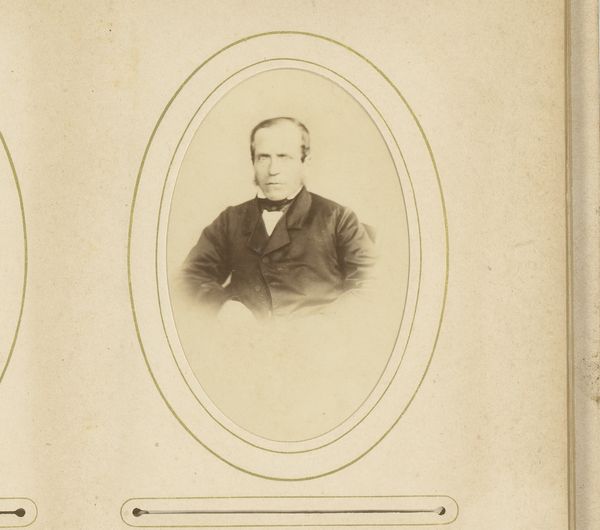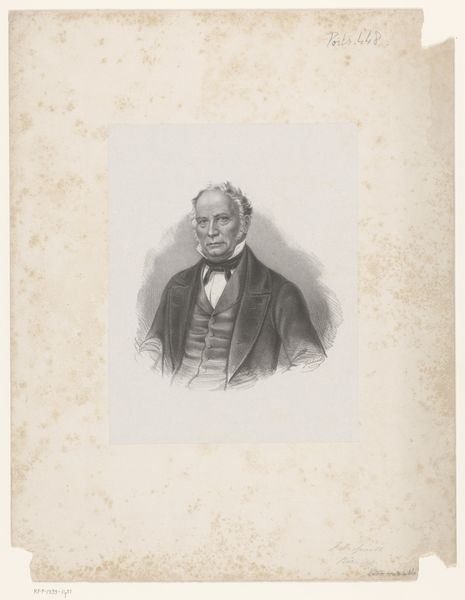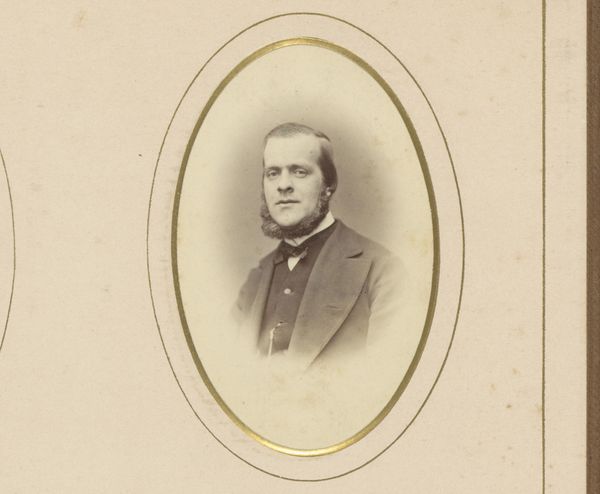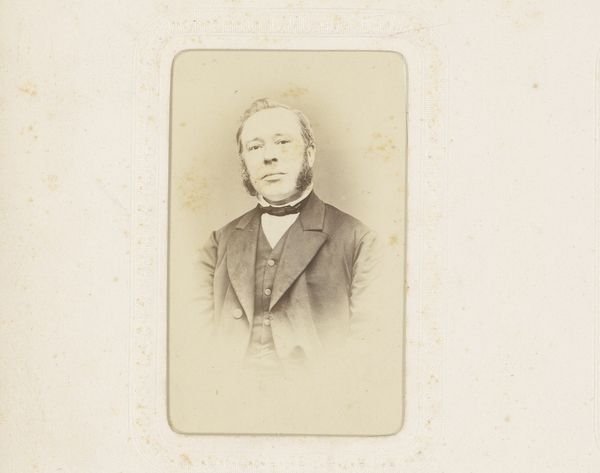
photography, albumen-print
#
portrait
#
aged paper
#
toned paper
#
photography
#
old-timey
#
19th century
#
albumen-print
Dimensions: height 94 mm, width 61 mm, height 105 mm, width 62 mm
Copyright: Rijks Museum: Open Domain
Curator: Here we have an albumen print, a photographic portrait dating from around 1880 to 1900. It's simply titled "Portret van A.J. Swart," so likely commissioned privately. Editor: There's something incredibly dignified about it. The way the gentleman is posed, the sharpness of the focus on his face, even the faded tones… It evokes a sense of profound respect. Curator: Indeed. The albumen print was popular in the 19th century for portraiture. Its sharp detail allowed for accurate representation. The toning of the paper adds to the sense of historical depth, doesn't it? Editor: It does. But I'm struck by what’s not revealed. The backdrop is just a blur. Who was A.J. Swart? What were his concerns, his joys, his struggles within the world around him? It compels me to question the narratives preserved through images like these. Who gets to be remembered and why? Curator: That's an interesting perspective. The very act of sitting for a photograph, commissioning it even, does suggest a certain level of social standing and privilege, doesn't it? Access to visual representation wasn't democratic. Editor: Precisely. Consider the technological advancements that made such portraits possible, often benefiting certain classes or groups while simultaneously solidifying prevailing power structures through these visual legacies. The images may offer what seems like an unfiltered snapshot of a life, yet also present a curated display. Curator: So true. I am fascinated by how our view of portraits like this evolves over time. Early viewers would've seen it perhaps simply as a commemoration, whereas we consider social, economic, even ideological meanings within it. Editor: Exactly. Examining "Portret van A.J. Swart" prompts us to look deeper, seeking richer narratives, to critically assess how power dynamics manifest through image creation. Curator: Looking closer certainly yields many avenues for considering 19th century Dutch life. Editor: Yes, It's not merely about seeing but asking what is not being shown to the eye.
Comments
No comments
Be the first to comment and join the conversation on the ultimate creative platform.
